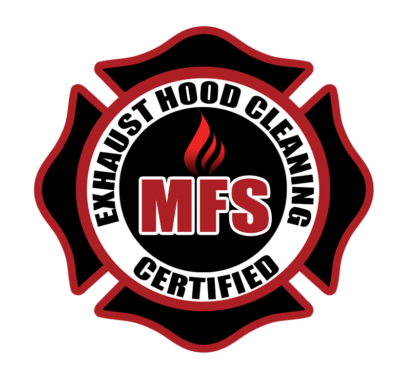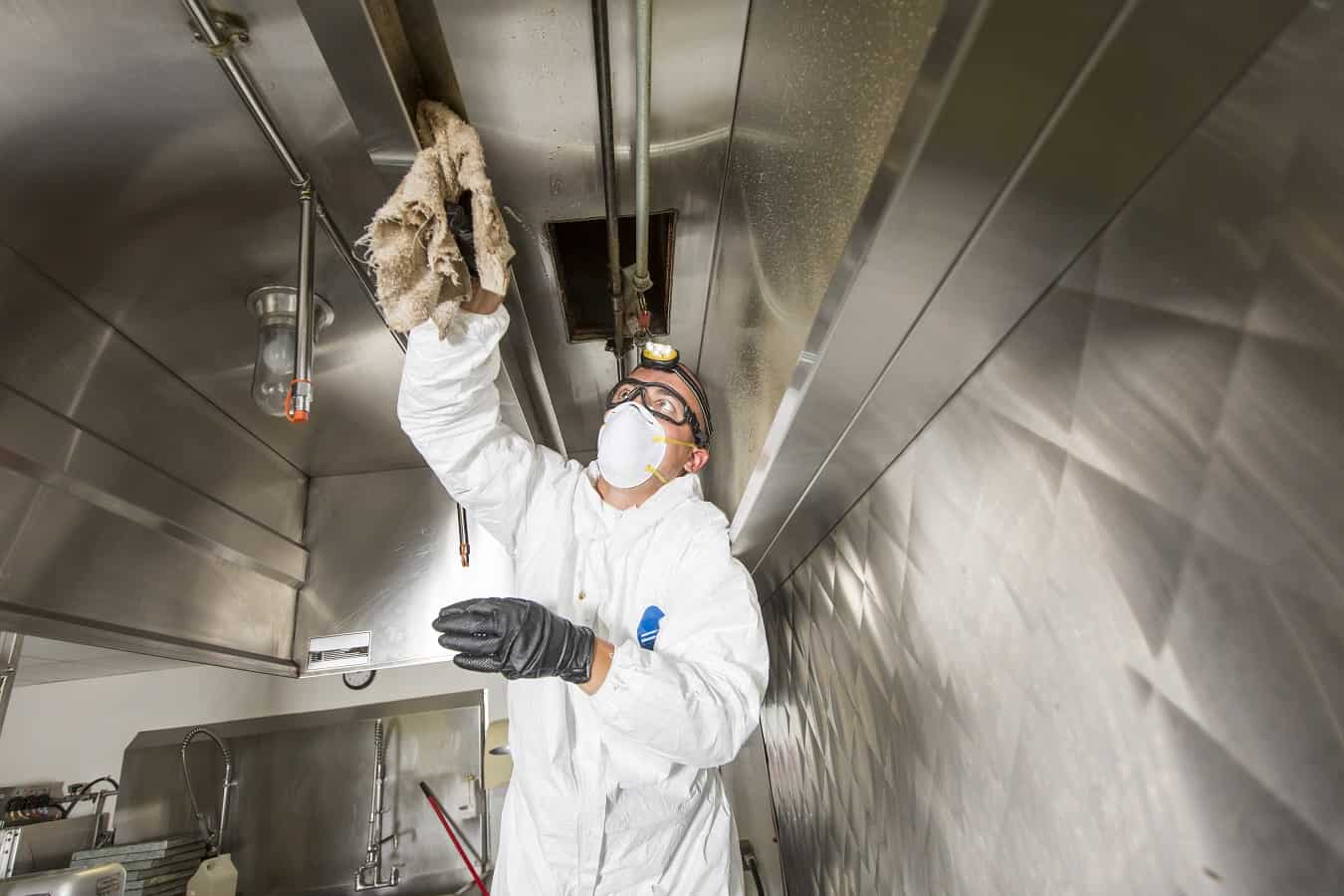Cleaning your Commercial Kitchen Exhaust Hood

In addition to the regular daily cleaning your employees perform on a day to day basis, it is imperative that your Commercial Kitchen Exhaust Hood System is cleaned regularly. This is essential to the safety and cleanliness of your restaurant or kitchen as the grease deposits left behind are both a severe fire hazard and a health risk due to mold and bacteria growth and is required by the Fire Department annually at a minimum.
Our Commercial Kitchen Exhaust Cleaning is done per NFPA 96 Standards and our Technicians are certified by by the MFS Tradeschool.
Below are some common questions we encounter when discussing Commercial Kitchen Exhaust Cleaning with clients.
FAQ
How often does my system need to be cleaned?
- Monthly Cleaning is required if you serve solid fuel cooking or smoking.
- Quarterly Cleaning is required for kitchens or restaurants with high volume, 24 hour cooking, charbroiling, or wok cooking.
- Bi-annual Cleaning (twice per year) is required for moderate-volume cooking.
- Annual Cleaning is required for low volume cooking, churches, day camps, seasonal businesses, or seniors centres.
Does our commercial kitchen still need to be cleaned if we rarely use it?
Additionally, if your exhaust system sits unused for long periods of time, this grease that accumulates becomes stagnant and turns into a tar-like substance. This residue encourages mold and bacteria growth in your system and the subsequently the system will take longer to clean. This build up, can also cause unbalancing of the fan, disrupt airflow, and release airborne particles into your facility. This is why we recommend cleaning your system at the end of your operating season if you operate seasonally.
Why can't our employees clean the hoods?
Do you need roof access and does the roof get cleaned?
What is included when cleaning the hood?
How long does the service take and what do we need to do to prepare?
You are not required to do anything to prepare for the hood cleaning! Access to the restaurant and roof will be arranged when booking.
What is a Hinge Kit?
Can my hood be cleaned on a Saturday?

Now you can rest easy with a name you can trust
For over 30 years Red River Furnace and Duct Cleaning has serviced Federal and Municipal government buildings, restaurants, seniors homes, schools, office towers, banks, hospitals, penitentiaries, doctor’s offices, etc.
Contact us today for a FREE Commercial Estimate for Kitchen Exhaust Hood Cleaning at your business!
